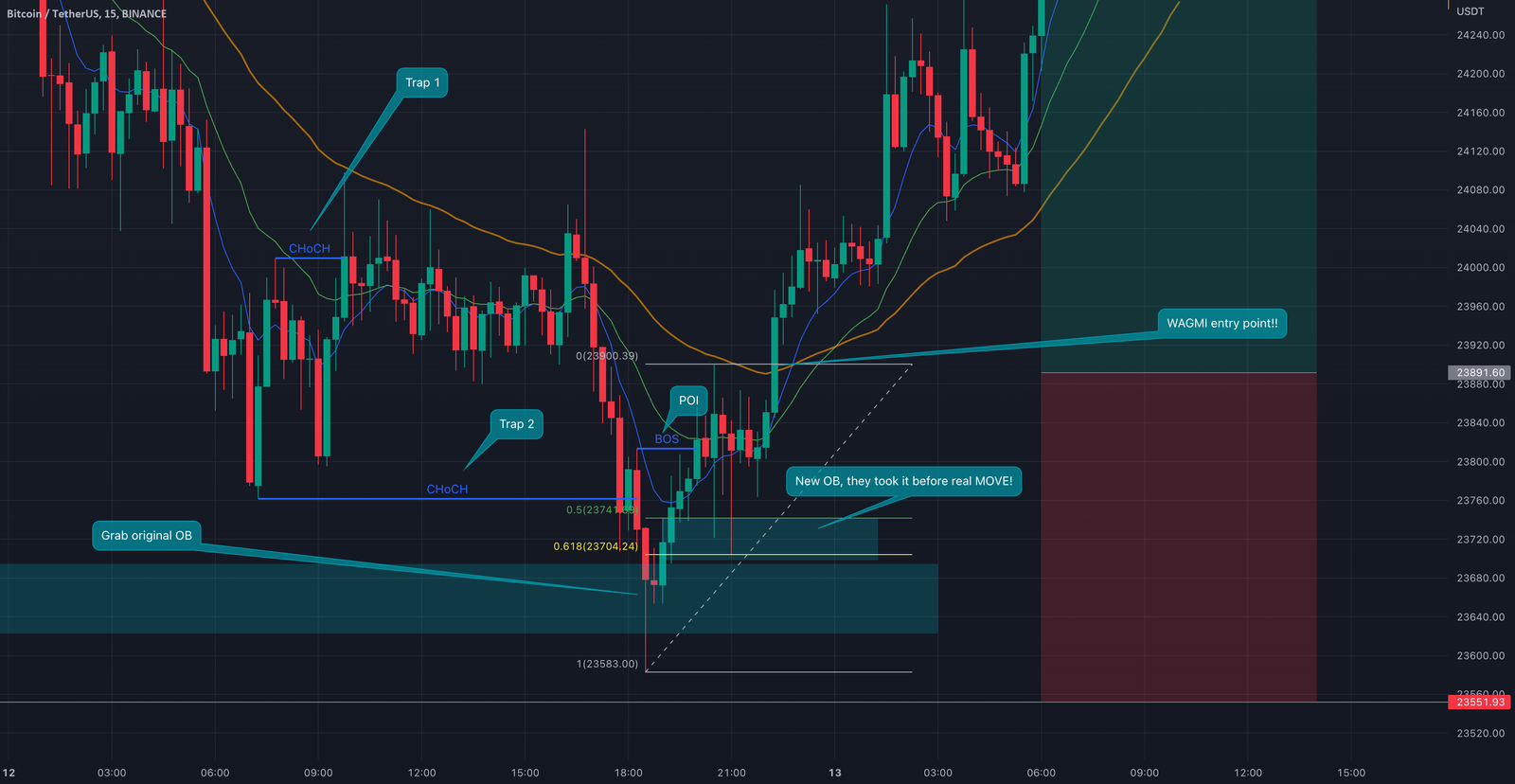The latest drawdown didn’t just sting—it validated months of warnings that a sharp correction was brewing beneath crypto’s new-cycle exuberance. A crypto crash prediction that many dismissed as alarmism has now come true, jolting both seasoned traders and newcomers. Bitcoin’s volatility reasserted itself, Ethereum followed suit, and the broader market repriced risk in real time as macro headlines collided with fragile positioning. For investors, the question isn’t “what happened?”—it’s what’s next for Bitcoin and Ethereum over the coming weeks and quarters.
In the past few days, Bitcoin slumped on escalating U.S.–China trade tensions after a fresh tariff shock, and majors slid in sympathy. Analysts had already flagged a softer September and early-October tape; now, the pullback and subsequent chop are forcing the market to reassess liquidity, leverage, and narratives like ETFs and post-halving supply dynamics. The silver lining? Cyclical shakeouts clear excess leverage, reset funding, and create higher-quality bases for the next move—up or down.
Why the Crypto Crash Prediction Came True
Macro catalysts finally hit fragile positioning
Markets don’t crash in a vacuum; they break where positioning is weakest. The immediate spark this time was a surprise escalation in U.S. tariffs on Chinese tech exports, paired with new export controls that unnerved risk assets globally. Within hours, crypto repriced: Bitcoin fell sharply—an 8%-plus downdraft was recorded around $104,000–$105,000 during the worst of the move—while Ethereum slipped in sympathy. Mainstream desks tied the move to the tariff shock and broader risk-off, with equities wobbling as well.
Seasonality and sentiment set the stage
Even before the headline shock, September and early October had a reputation for softer crypto performance—and 2025 tracked the script. Several outlets flagged deepening profit-taking after a run to new highs, rising U.S. dollar strength, and thinning liquidity into macro risk events. When the surprise hit, it landed on a market already leaning the wrong way.
Structural narratives: halving + ETFs = higher highs… and deeper shakes
Yes, spot Bitcoin ETFs and the 2024 halving have changed market structure by deepening demand and draining miner supply. But those tailwinds don’t cancel volatility; they compress it until macro shocks or positioning release the pressure. The very flows that helped push BTC to fresh records can reverse on risk-off days, amplifying intraday swings and creating “air pockets.” Research over the summer and early fall consistently framed 2025 as a year of institutionalization with episodic volatility—exactly what we just lived through.
Bitcoin The Post-Shock Setup

The near term: key levels and triggers
After the tariff shock and the swift repricing, Bitcoin now contends with three overlapping battle lines:
-
Psychology zone around six figures. The $100k–$110k band has become a psychological fulcrum. Reclaims here often trigger fast momentum; breaks invite forced selling as risk controls trip.
-
ETF flow sensitivity. Day-to-day, ETF creations/redemptions matter. A pause or reversal in inflows can weaken bids temporarily; renewed creations often coincide with relief rallies. Watch for signs of stabilization as macro dust settles. Several market columns this week emphasized how ETF flow dynamics are feeding short-term swings.
-
Dollar and rates. A stronger U.S. dollar and rising real yields tend to pressure risk assets, including Bitcoin. If the dollar surge cools, BTC often breathes easier—if not, expect continued chop.
The intermediate term: cycle health check
Despite the correction, the cycle architecture remains intact: halving-reduced supply, sticky institutional demand through regulated vehicles, and corporate treasuries treating BTC as digital reserve collateral. The risk: macro “left tails” (policy surprises, growth scares) can still overpower crypto-native narratives for multi-week stretches. Well-sourced outlooks published in late summer highlighted this balance—bullish structure with intermittent turbulence.
What would turn Bitcoin decisively higher?
A sustained up-leg from here would likely require a two-step confirmation:
-
Macro relief: Cooling trade tensions or clarity on policy that reduces tail risk premia. The October tariff shock underscored how sensitive BTC remains to geopolitics.
-
Flow + breadth: Resumption of net ETF creations alongside stronger breadth in large-cap alts. When leadership broadens beyond BTC, it signals a healthier risk appetite rather than a narrow, defensive bid.
Ethereum: Catch-Up, Divergence, or Something New
Why Ethereum lagged—and why that could change
In the latest break, Ethereum underperformed in parts of September and early October as demand softened and some ETF optimism faded relative to Bitcoin’s narrative dominance. On-chain trackers noted brief periods of net supply expansion and mixed fee burn as L2 costs fell after earlier upgrades, blunting ETH’s structural burn. Market pieces over the past weeks echoed these dynamics, calling for patience as ETH digests overhead supply.
The roadmap: Pectra, L2 scale, and staking dynamics
Fundamentally, Ethereum’s roadmap still orbits around throughput and UX improvements. After Dencun’s proto-danksharding (EIP-4844) cut L2 data costs, attention turns to Pectra and validator-related improvements. Faster finality and smoother withdrawals can improve capital efficiency across the staking economy—fertile ground once macro stabilizes and application demand returns. A spring overview connected these milestones with 2025 price scenarios, reminding investors that network upgrades are cumulative catalysts, not single-day fireworks.
What would flip ETH leadership back on
-
Rotation from BTC to ETH as traders seek beta once risk appetite returns.
-
On-chain re-acceleration: rising fee burn, robust L2 activity, and developer momentum around consumer-grade apps.
-
ETF clarity: A steadier path on ether-related products and messaging can normalize flows and reduce reflexive selling during macro scares. Recent commentary has noted how wavering ETF sentiment was a headwind into October.
The Macro Overlay You Can’t Ignore
Geopolitics can override the crypto story—fast
The tariff and export-control shock is a live example of geopolitics punching through market structure. Crypto trades globally, so trade frictions and policy uncertainty propagate quickly through liquidity, especially during thin hours. This is why risk management—not just conviction—remains essential. Coverage this week from wire services and financial media drew the same conclusion: macro trumps micro on short timeframes.
The dollar and real yields
A firm U.S. dollar often correlates with a softer crypto tape, particularly when real yields grind higher. When the DXY cools or real yields soften, Bitcoin and Ethereum tend to stabilize or catch a bid. This tug-of-war was on clear display across late September and early October as traders toggled between “buy the dip” and “step back until the dust settles.” Coverage noted the dollar’s recent strength as a pressure point for risk.
How Smart Money Is Likely Framing the Next 90 Days

Respect ranges; don’t fight liquidity pockets
Post-shock, markets often carve wide ranges before choosing direction. Expect failed breakouts and breakdowns as liquidity rebuilds and derivatives positioning resets. For Bitcoin, watch the $100k–$110k region as a sentiment hinge; for Ethereum, observe $3.6k–$4.3k as a risk-marker zone flagged by multiple desks in recent notes.
Track the right data, not just the price
For Bitcoin: ETF creations/redemptions, funding rates, basis, and realized volatility will tell you if the market is healing. For Ethereum: L2 activity, fee burn, staking flows, and any ETF-related headlines offer early reads on whether ETH can reclaim leadership. Recently, mainstream coverage directly linked daily swings to dollar strength and ETF flow jitters—signals worth prioritizing.
Embrace staggered entries and exits
The best operators scale in and out. They ladder bids into higher-probability zones and trim into strength, avoiding all-in bets that require perfect timing. In a regime defined by macro crosswinds and structural adoption, risk budgeting is a bigger edge than any single indicator.
Separate thesis from timeframe
The long-term thesis for Bitcoin—scarcity plus institutionalization—remains intact, as repeatedly outlined by research desks through 2025. But your timeframe determines your actions: swing traders and allocators can be bullish for different reasons while behaving differently day to day. For ETH, the builder’s roadmap may be the true north, while traders care about flows and rotation. Maintaining two mental models prevents whiplash.
What Could Go Wrong From Here
A second macro shock before positioning resets
If the policy backdrop delivers another negative surprise before leverage fully clears, a second leg lower is possible. This risk is not hypothetical; market commentators are warning of additional flash-crash-style vulnerabilities when liquidity thins and dealers de-risk.
ETF outflows and liquidity “air pockets”
ETFs have been a blessing for access—but on bad days, they can concentrate outflow pressure. Several recent analyses warned that ETF flow reversals could magnify short-term drops, particularly if they coincide with macro stress.
Network-specific friction
For Ethereum, any upgrade delays, unexpected validator issues, or app-layer slowdowns can dent sentiment during already fragile windows. Conversely, smooth progress toward Pectra and stronger L2 traction could flip that script.
The Bull Case—Still Alive, Just Noisier
Bitcoin’s scarcity + institutional bridge
Even critics agree that post-halving supply contraction and regulated access via ETFs have changed who buys Bitcoin and how much. The market is walking a narrow ridge between macro noise and structural demand. When the latter dominates, BTC trends; when the former explodes, it whips. The crash didn’t invalidate the thesis—it stress-tested it.
Ethereum’s compounding upgrades and app surface
For ETH, the compounding effect of cheaper L2s, better developer tooling, and faster finality under Pectra points to a cleaner user experience and broader app surface over time. The catch is patience: these catalysts accrue gradually and then show up all at once when macro allows. A recent slate of outlooks emphasized precisely this timing tension.
A Practical Game Plan (Education, Not Advice)
For long-term allocators
Allocators who DCA into BTC and barbell ETH exposure tend to ride through shakeouts while maintaining dry powder for outsized dislocations. If your thesis is multi-year, the just-confirmed crypto crash prediction is not a thesis breaker—it’s a test of discipline.
For active traders
Respect the range, honor stops, and let flow confirm direction. Add risk only when ETF creations re-emerge, breadth improves, and macro risk premia compress. On ETH, watch for fee burn re-acceleration and L2 velocity; on BTC, monitor dollar pullbacks and real-yield relief as tailwind confirmations.
For builders and founders
Downturns are when sticky users are earned. Use the quieter tape to improve onboarding, reduce transaction friction, and ship features that align with a likely next upcycle in consumer-grade apps.
Bottom Line
The Crypto Crash Prediction didn’t just come true—it arrived via a classic macro shock that exposed over-eager positioning and fragile liquidity. Bitcoin and Ethereum remain anchored by powerful structural forces, but near-term direction will be determined by macro headlines, ETF flows, and on-chain usage.
If the macro storm calms and flows normalize, BTC can reassert trend leadership, and ETH can rotate higher on network fundamentals. Until those confirm print, expect a choppy, range-bound market where patience and position sizing are the biggest edges.
FAQs
Did the tariff news really trigger the latest leg down?
Yes. Multiple mainstream outlets tied Bitcoin’s sharp drop to the U.S. decision to dramatically hike tariffs on Chinese tech exports, coupled with new export controls, which spooked risk assets and sent BTC and ETH lower in tandem.
If ETFs are bullish, why didn’t they protect prices?
ETFs simplify access and deepen aggregate demand, but they don’t negate volatility. On risk-off days, ETF outflows can accentuate downside before stabilizing—just as inflows can supercharge up-moves during positive risk windows. Recent coverage explicitly connected day-to-day crypto moves with ETF flow jitters and a stronger dollar.
What on-chain signals matter most for Ethereum right now?
Watch L2 activity, fee burn, staking flows, and progress toward the Pectra milestone. Through October, some trackers highlighted softer demand and episodes of net supply expansion, which weighed on ETH’s relative performance—conditions that can flip once activity returns.
Has the long-term Bitcoin thesis changed after the crash?
No. The halving and institutionalization via ETFs still define this cycle. What’s changed is the tempo: macro shocks can temporarily overshadow those structural forces, leading to sharp but typically short-lived dislocations.
What would be credible signs the worst is over?
Look for macro de-escalation, stabilizing or rising ETF creations, improving market breadth beyond Bitcoin, and (for ETH) re-accelerating on-chain demand. If those boxes start to tick, the market’s next advance can build on a cleaner base. Commentary this week and last month has repeatedly emphasized these markers.


